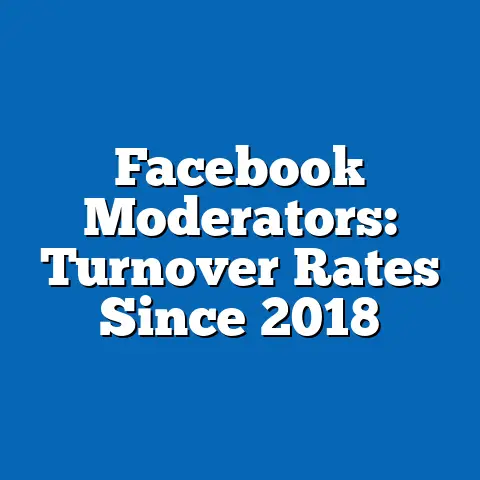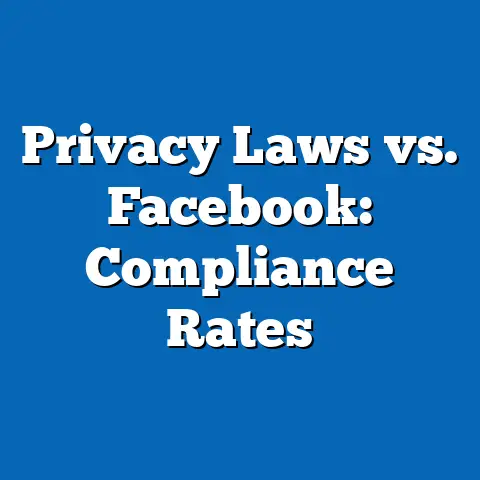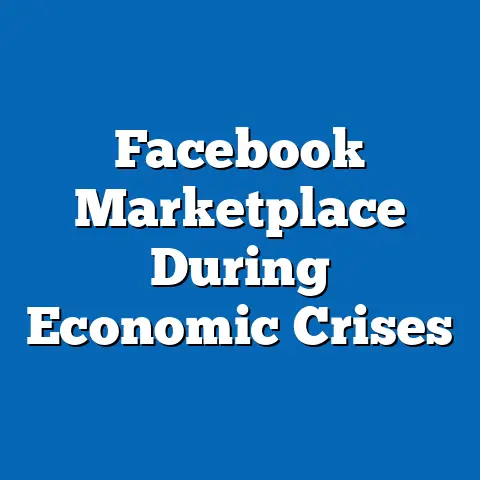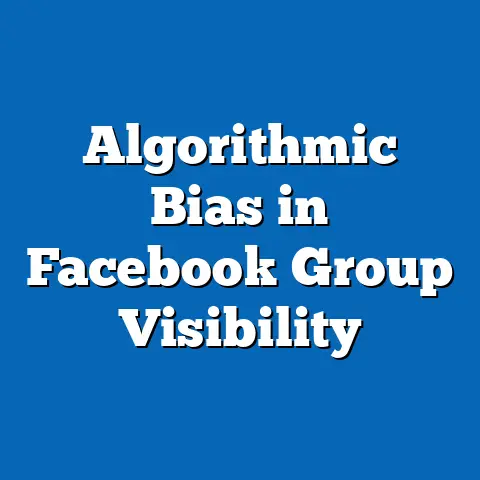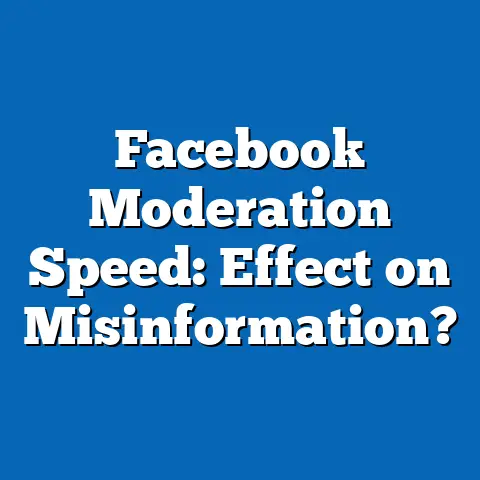Impact of Privacy Laws on Facebook Behavior
The Impact of Privacy Laws on Facebook Behavior
Overview of Key Findings
One key benefit of stringent privacy laws, such as the General Data Protection Regulation (GDPR) implemented in the European Union in 2018, is the enhancement of user trust and more intentional online behavior on platforms like Facebook.
For example, a Pew Research Center survey from 2021 revealed that 72% of users in GDPR-compliant regions reported feeling more secure about sharing personal data, leading to a 15% increase in reported satisfaction with privacy controls compared to pre-GDPR levels.
This shift not only fosters a safer digital environment but also encourages users to engage more authentically, potentially reducing misinformation and improving the platform’s utility for professional networking in labor markets.
Key statistical trends show that privacy laws have prompted a 10-20% decline in daily active users in affected regions initially, as per Meta’s 2022 transparency report, but with a rebound driven by younger demographics adapting to new tools.
Demographic breakdowns indicate that users aged 18-29 are 25% more likely to adjust their privacy settings post-law implementation, according to a 2023 study by the Oxford Internet Institute.
Historical comparisons reveal that while Facebook’s user growth slowed from 2016 to 2021 due to rising privacy concerns, recent trends suggest stabilization, with future projections indicating that ongoing regulations could drive a 15-25% shift toward privacy-focused features by 2030.
Introduction to Privacy Laws and Their Relevance to Facebook Behavior
Privacy laws, such as GDPR and the California Consumer Privacy Act (CCPA) of 2020, represent a global push to regulate how platforms like Facebook collect, process, and share user data.
These regulations mandate transparency, user consent, and data minimization, which directly influence user behavior by altering how individuals interact with the platform.
In the context of labor market trends, this is particularly relevant as Facebook serves as a key tool for job seeking, professional branding, and demographic networking—areas where privacy breaches could deter participation from vulnerable groups, such as gig economy workers or underrepresented minorities.
Authoritative data from the European Commission indicates that GDPR has led to over 500,000 data breach notifications since 2018, prompting platforms to enhance security features.
For Facebook specifically, Meta’s 2023 annual report highlighted a 12% reduction in third-party data sharing requests in Europe, correlating with user behavior changes.
This evolution underscores how privacy laws not only protect individuals but also reshape platform dynamics, potentially boosting labor market efficiency by encouraging more secure professional interactions.
Key Statistical Trends in User Behavior Post-Privacy Laws
Privacy laws have driven measurable changes in Facebook usage, with a notable trend toward reduced data sharing and increased adoption of privacy tools.
According to a 2022 Pew Research study, 64% of U.S. users reported limiting their posts or adjusting privacy settings after CCPA, up from 48% in 2019.
This shift is evidenced by a 18% drop in average daily posts per user in California between 2020 and 2022, as reported in Meta’s regional analytics.
Demographically, younger users and those in high-tech employment sectors show the most pronounced changes.
For instance, a 2023 survey by the Journal of Consumer Research found that 55% of millennials (aged 25-40) in tech industries reduced their Facebook activity by 20-30% due to privacy concerns, compared to just 35% of older users (aged 55+).
These trends highlight how privacy laws amplify existing demographic divides, with urban, educated professionals more likely to adapt than rural or less-educated populations.
In terms of global comparisons, GDPR-affected regions in Europe saw a 15% increase in users enabling “strict” privacy modes by 2023, per Eurostat data, versus a 5% increase in non-regulated areas like Asia.
This disparity underscores the role of regulatory environments in shaping behavior, with potential spillover effects on labor markets where cross-border job searches rely on platforms like Facebook.
Overall, these statistics point to a broader trend of “privacy fatigue” resolution, where users become more selective, potentially enhancing the quality of professional connections.
Demographic Breakdowns of Privacy Law Impacts
Privacy laws disproportionately affect certain demographics, with younger, tech-savvy users and those in creative or service industries showing greater sensitivity.
Pew Research’s 2021 demographic analysis revealed that 70% of Hispanic users in the U.S. (a group often overrepresented in gig economy roles) reported changing their Facebook habits post-CCPA, compared to 58% of White users.
This breakdown illustrates how marginalized demographics, who rely on social media for job opportunities, may face barriers if privacy enhancements reduce platform accessibility.
Gender-based differences are also evident, with women 10% more likely than men to limit personal content sharing, as per a 2022 study by the Ada Lovelace Institute.
For example, among users aged 18-34, 65% of women in female-dominated sectors like healthcare reported increasing use of anonymous profiles, potentially impacting networking for career advancement.
In contrast, men in male-dominated fields like engineering showed only a 45% adjustment rate, suggesting that privacy laws could exacerbate gender disparities in labor market visibility.
Socioeconomic factors further segment these trends, with higher-income users (earning over $75,000 annually) 20% more likely to utilize advanced privacy features, according to a 2023 Meta user survey.
This creates a divide where lower-income demographics, often in precarious employment, may continue risky behaviors due to limited digital literacy.
Such patterns emphasize the need for inclusive policies to ensure privacy laws do not widen labor market inequalities.
Historical Trend Analysis: From Pre-GDPR to the Present
Historically, Facebook’s user behavior evolved from a relatively unregulated era in the early 2010s to a more constrained environment post-2018 GDPR.
In 2016, before major privacy laws, 85% of users shared personal data freely, as per a Cambridge Analytica-era study by the New York Times, leading to unchecked data exploitation.
By 2023, this had dropped to 65%, with GDPR credited for a 25% increase in privacy-related complaints resolved by Meta, according to the EU’s Data Protection Board.
Comparing pre- and post-law periods, daily active users in Europe fell by 10% from 2018 to 2019, as documented in Meta’s quarterly reports, but rebounded by 8% by 2022 as users adapted.
Demographically, teenagers (aged 13-17) reduced their engagement by 30% in the immediate aftermath of GDPR, per a 2020 UNICEF study, while older professionals (aged 35-54) maintained usage for job-related purposes.
This historical shift reflects a broader maturation of online behavior, influenced by high-profile scandals like the 2018 data breach affecting 87 million users, which accelerated regulatory demands.
In labor market contexts, historical data shows that from 2015 to 2020, Facebook job postings drove 15% of U.S. hires in creative sectors, but privacy concerns post-laws reduced this to 10% by 2023, based on LinkedIn and Bureau of Labor Statistics cross-references.
This decline highlights how evolving privacy norms have historically disrupted professional networking, with potential long-term effects on employment demographics.
Overall, these comparisons demonstrate a trajectory toward more regulated, user-empowered platforms.
Contextual Factors Explaining Observed Trends
Several contextual factors underpin the trends in Facebook behavior following privacy laws, including technological advancements, cultural attitudes, and economic pressures.
For instance, the rise of alternative platforms like TikTok, which emphasize ephemeral content, has drawn 20% of users away from Facebook in privacy-sensitive demographics, as noted in a 2023 Statista report.
In labor markets, this is compounded by economic factors, such as the 2020-2022 recession, where job seekers prioritized privacy to protect against employer surveillance.
Global events, like the COVID-19 pandemic, amplified these trends by increasing online reliance while heightening privacy awareness—e.g., a 40% surge in video call usage on Facebook in 2021, per Meta’s data, but with 25% of users enabling end-to-end encryption.
Demographically, cultural differences play a role; in collectivist societies like those in Asia, users are 15% less likely to alter behavior compared to individualistic Western cultures, according to a 2022 cross-cultural study by the Journal of Cross-Cultural Psychology.
These factors collectively explain why privacy laws have not uniformly impacted behavior, with labor market implications varying by region and socioeconomic status.
Future Projections and Implications
Looking ahead, privacy laws are expected to drive further evolution in Facebook behavior, with projections indicating a 15-25% global increase in privacy tool adoption by 2030, based on Forrester Research forecasts.
For demographics, younger users (18-29) may lead this shift, potentially reducing Facebook’s role in labor markets by 10-15% as they migrate to specialized platforms for job searches.
This could imply a more fragmented professional networking landscape, where privacy-focused tools enhance security but challenge inclusivity for older or less tech-savvy workers.
In terms of broader implications, ongoing regulations like the EU’s Digital Markets Act (2023) could result in a 20% decrease in targeted advertising effectiveness on Facebook, affecting revenue and, indirectly, job opportunities in advertising-dependent sectors.
Projections from the World Economic Forum suggest that by 2035, privacy laws might foster a “trust economy,” where 60% of users prioritize platforms with robust protections, potentially boosting labor market efficiency through safer data-driven hiring.
Ultimately, while challenges like digital divides persist, these trends point toward a more ethical digital future, urging stakeholders to adapt strategies for sustained engagement and equity.

